
There are many people who think that conifers are a type of tree. In reality, plants are divided in ..., true, many different ways and types, but above all they can be classified in a simple way: flowering plants and non-flowering plants. The former are technically known as angiosperms and they are the ones that mostly inhabit the planet, which are recent but not as much as believed; while the latter are known as gymnosperms and they are the first to appear on the face of the Earth, long before the dinosaurs did.
Or, so that we understand each other better: angiosperms would be, for example, dimorphic libraries, azaleas, trees (except one that we will see later), shrubs ...; and gymnosperms are all conifers, that is, pines, yews, cedar, and also all cycads such as Cyca revoluta. In addition to the way of reproduction, they have other differences to consider.
Gymnosperms
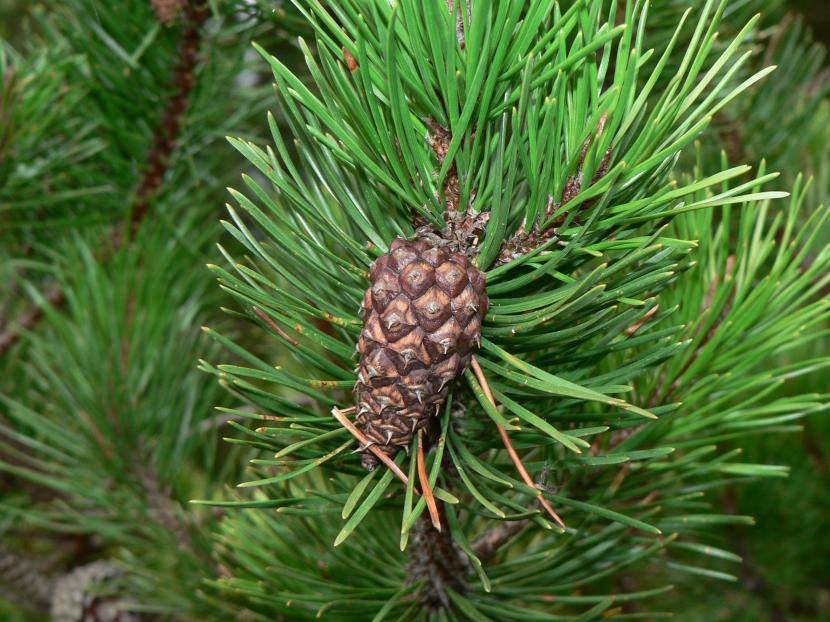
All the gymnosperms They present different characteristics to angiosperms. So to roughly they differ by:
- The leaves are usually thin, like "hairs". Most of these plants are perennial, which means that they do not lose their leaves in winter, but they do lose them little by little throughout the year.
- The fruit in most species is a kind of pineapple as seen in the photo, or as "balls" inside which are the seeds.
- In general, to achieve a high germination percentage, we will have to stratify the seeds for 2-3 months in the refrigerator at 6º.
Gymnosperms are the most primitive plants that exist. They made their appearance in the Carboniferous period, more than 350 million years ago. They are thus the simplest, but no less amazing for that. In fact, they can grow all over the world, from 72 degrees North to 55 degrees South, from very close to the Arctic Circle to the Antarctic tundra, we can even find species living along the coast.
Characteristics of Gymnosperms
Which are your principal characteristics? Are:
- The seed is bare from the first moment in which the flower, which is a branch of limited growth producing fertile leaves or "sporophylls", is pollinated.
- Most of the species are evergreen, which means that they remain evergreen. There are some that renew them little by little throughout the year, but there are others that do it every 2-3 years or even more.
- They are able to transport water better than angiosperms, since they have tracheids in their xylem. Tracheids are elongated cells whose extremities are tapered, found in the xylem, through which the raw sap circulates.
- They take a long time to reproduce. On average, it takes a year from pollination to fertilization, and seed maturation can take three years.
- The flowers of these plants are pollinated only by the wind, with the exception of the Cycads.
Examples of Gymnosperms
Balantium antarcticum
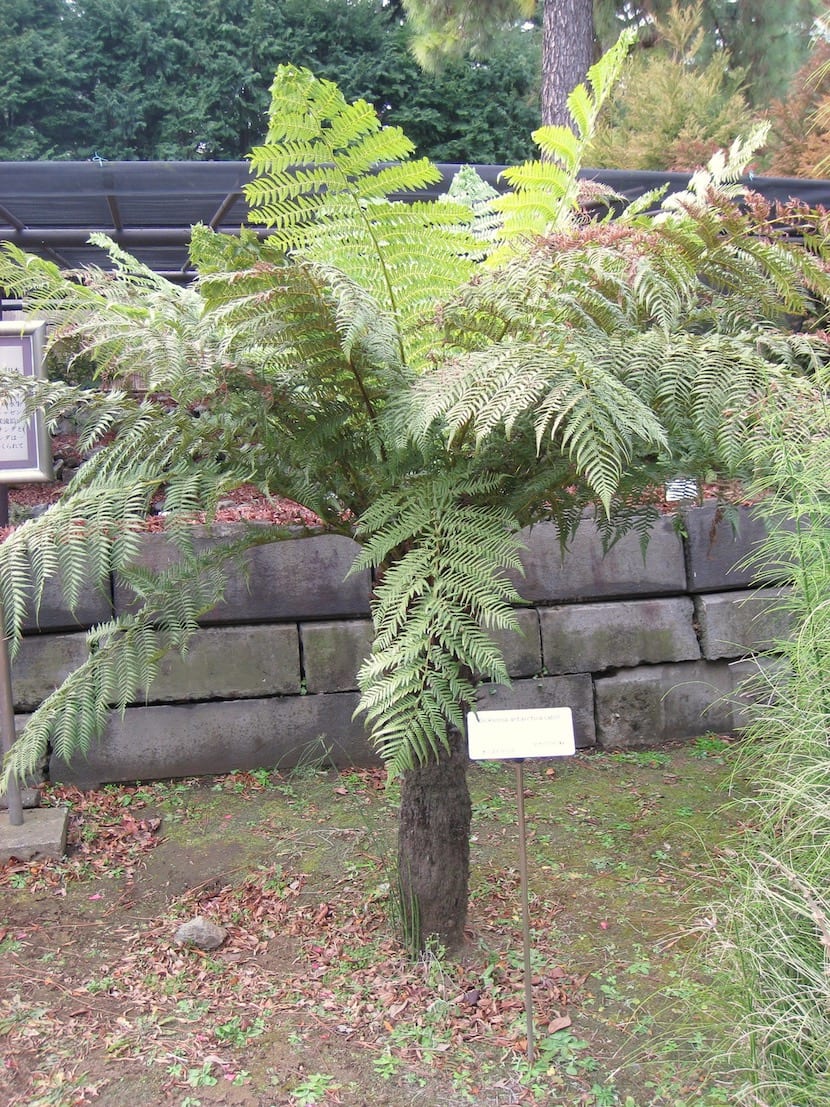
This is a precious tree fern native to New South Wales, Tasmania and Victoria, in Australia. It is quite reminiscent of the palm tree, but it has nothing to do with it. This plant reaches a height of about 15 meters, but they do not usually exceed 5 meters.
They are formed by an erect rhizome that forms a trunk, the base of which is covered by villi, and which is crowned by fronds (leaves) large, 2-6 meters long and with a rough texture. It is ideal to have in pots or in shady gardens, where they can enjoy mild-temperate climates.
Ginkgo biloba

It is a prehistoric tree that coexisted with the largest reptiles that the Earth has seen, the dinosaurs. They have survived a great mass extinction, climate changes typical of the time and it is for all this that we can now enjoy this incredible tree.
It reaches a height of about 35 meters, with deciduous leaves that fall in autumn after turning yellowish orange.. It is believed to be native to East Asia; However, today it is found in all temperate regions of the world, since it supports temperatures from 35ºC to -15ºC. In addition, it can live more than 2500 years.
As we said before, the trees belong to the family of angiosperms, except the Ginkgo biloba. This is a tree that does not have flowers with petals, but rather exposes the ovules and, once fertilized, they mature into the seed. Curious, right?
sequoia sempervirens
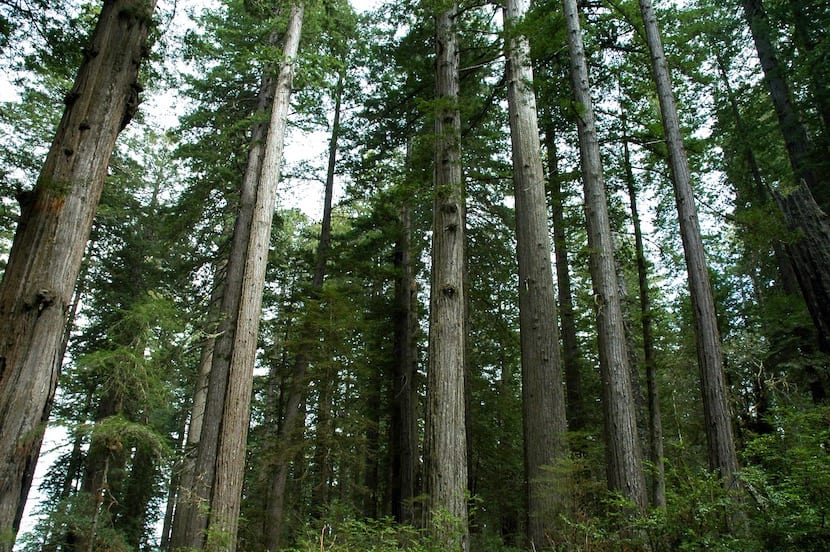
It is one of the tallest and longest-lived conifers in the world, native to the Pacific Coast of North America, in the west of the country. It is one of those plants that, to be able to return and enjoy it in all its splendor, you have to look up a lot: can reach 115 meters.
Although it is not a species that we recommend to have in the gardens, having such a slow growth rate (about 5cm per year) it can be cultivated without problems if you live in an area with a temperate-cold climate. Their life expectancy is also worthy of admiration: 3000-year-old specimens have been found.
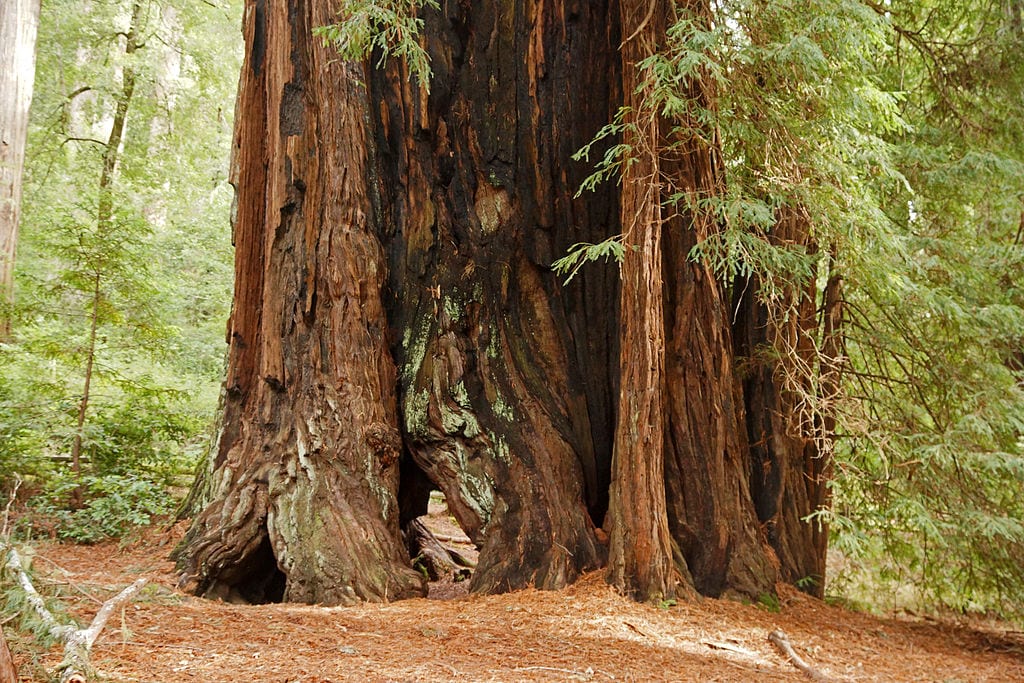
Angiosperms
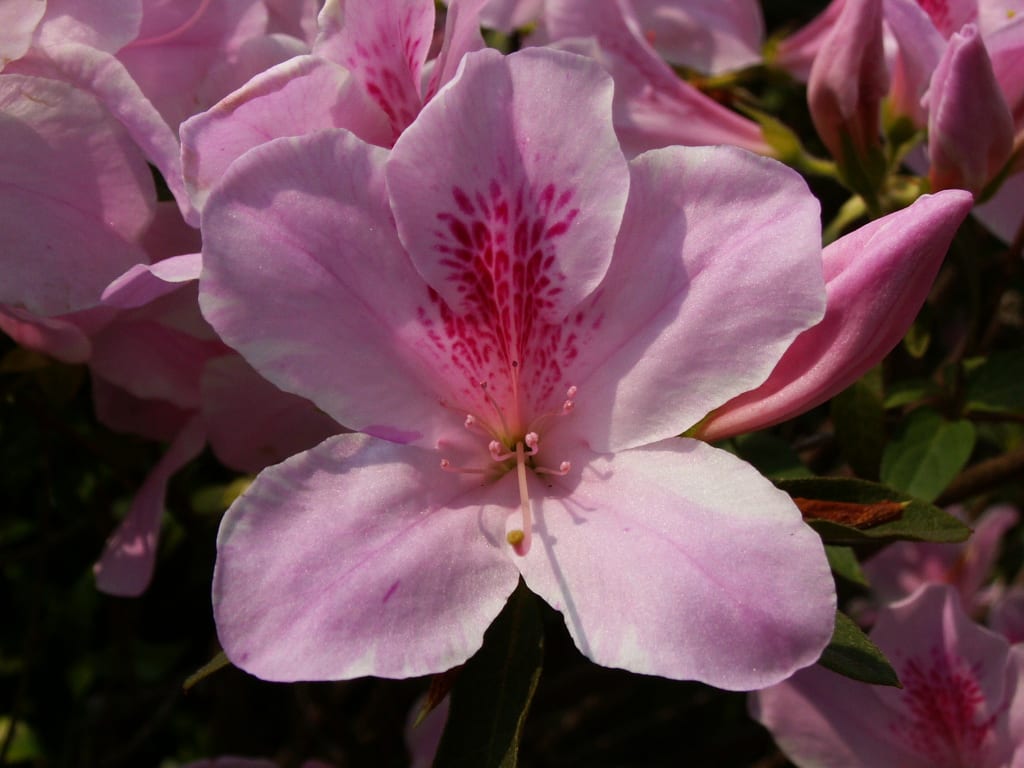
Angiosperm plants are much more '' modern ''. They began their evolution about 130 million years ago, in the Lower Cretaceous. They have been an achievement of nature, which until then had no way to protect its seeds. With the arrival of these wonderful plants, new generations have it much easier.
All the angiosperms are all those plants that produce flowers and later fruits with seeds. In this type of plants we can find trees, palm trees, seasonal plants, perennials, ... in short, those that we usually see in many gardens.
In the case of these plants, the ovum is protected, and after being fertilized it becomes the fruit.
Angiosperm characteristics
Its main characteristics are the following:
- The seeds, previously naked, are now protected within a fruit.
- The flowers are much more attractive, since they need pollinating animals and insects to reproduce.
- They dominate, above all, the tropical forests, although they can also grow in temperate climates.
- Its life cycle is from a few weeks to several hundred years, depending on the evolution that each species has had.
Examples of angiosperm plants
Copiapoa humilis
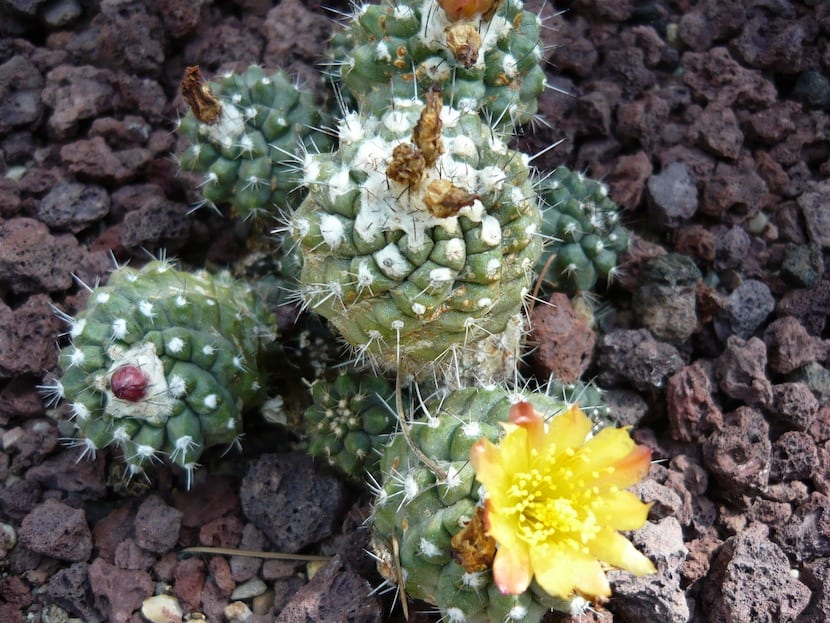
Cacti, although they seem to be a very different type of plant from the ones we are used to seeing, the reality is that they are angiosperms. The Copiapoa humilis, one of the easiest to find for sale is, like all of its kind, originally from Chile.
It is more or less spherical in shape, and produces many shoots up to 20cm tall. The small florets are yellow and sprout in summer.
Delonix direction
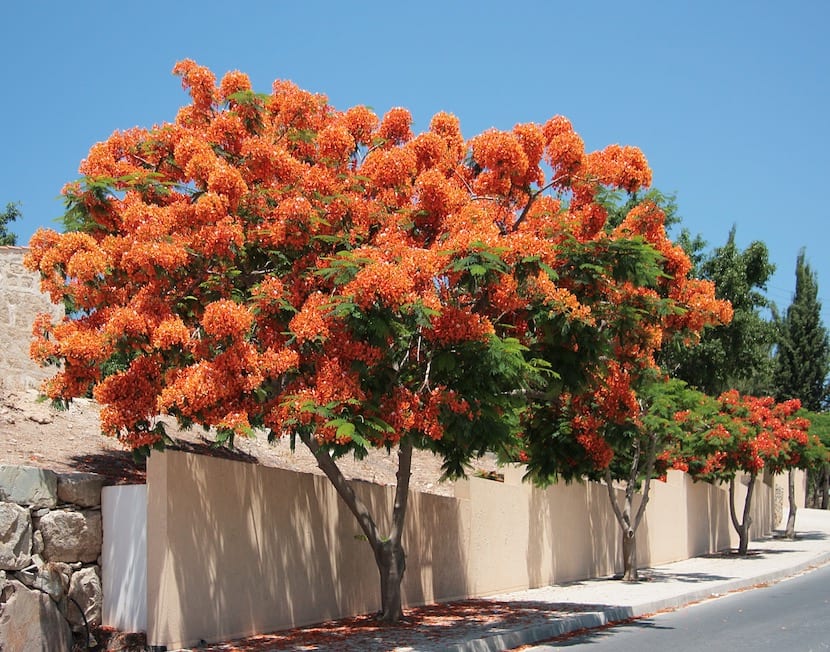
The flamboyan is one of the most cultivated trees in all the tropical regions of the world. Originally from Madagascar, It is characterized by having a parasol crown formed by leaves that behave like perennial or semi-deciduous or deciduous depending on the conditions that exist in the place where you are.
Reaches a height of up to 12 meters, with large flowers with four red or orange petals which sprout in spring. It is a highly recommended plant for medium-sized gardens, where frosts do not occur.
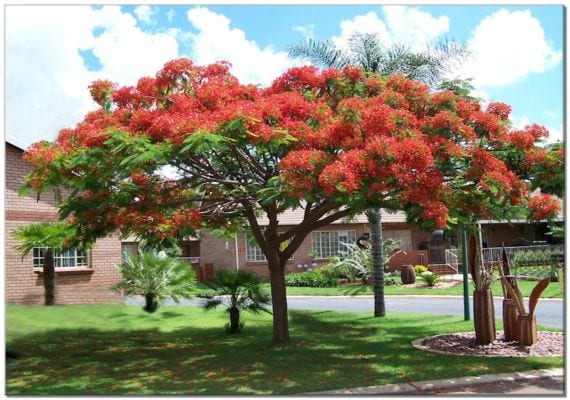
Gazania freezes
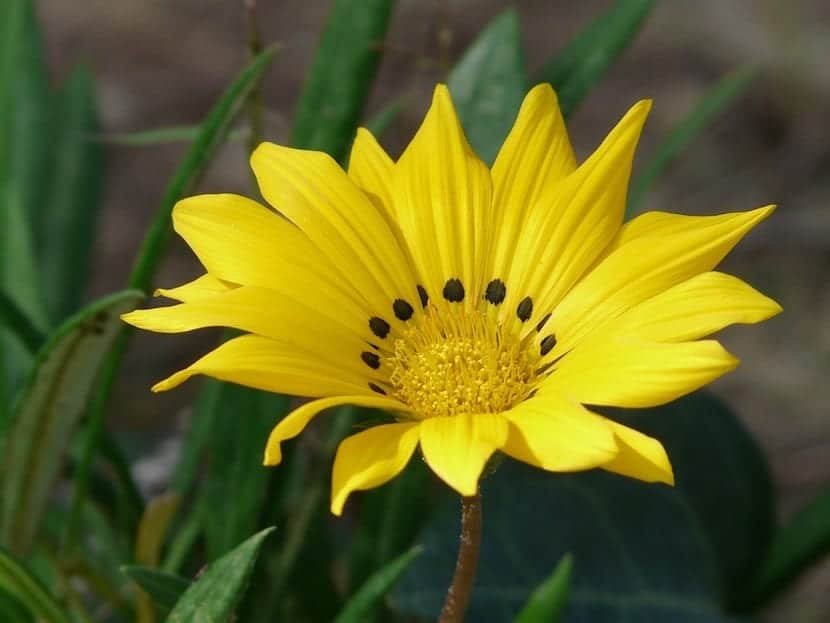
Gazania is a perennial herbaceous native to South Africa and Mozambique that, although it does not exceed 30cm in height, is one of the most curious that we can find for sale in nurseries and garden stores: its flowers, reminiscent of daisies, open with the sun and close at sunset. On cloudy days, the petals remain closed because they do not receive enough light.
For its size, it can be had both in pot and in the garden. Of course, it needs frequent watering and mild climates in order to survive.
Did you know the differences between one and the other?
Very good it served me a lot, I'm sure I rate 20
Thank you very much, Careli. We are glad you liked it 🙂
I loved the Blog. you have an ability to easily explain the topics, you can see the passion you have for plants and the best of all is that you transmit it
Thank you very much for your words, Nell 🙂
Thank you, it was very useful, all this gave me the answers